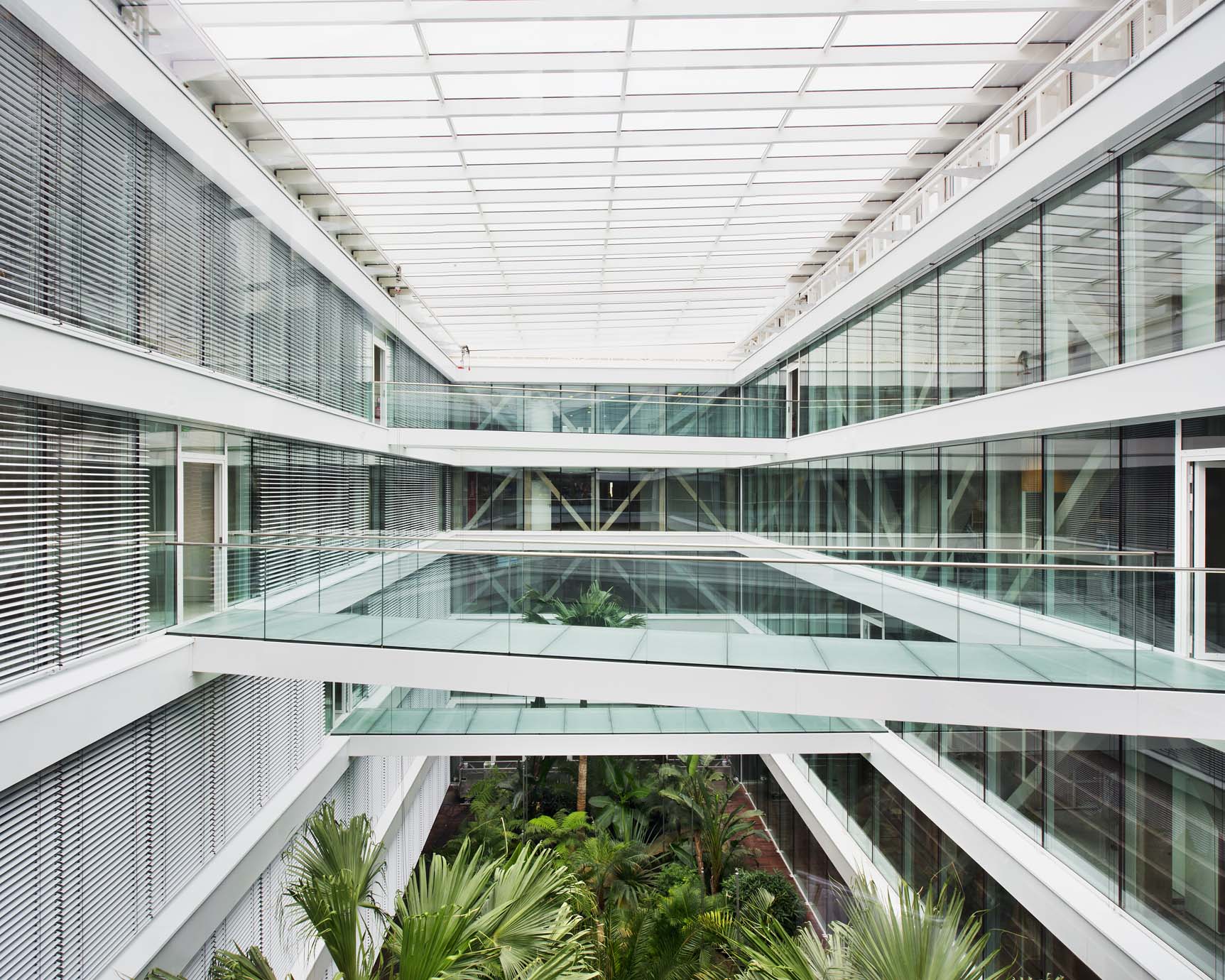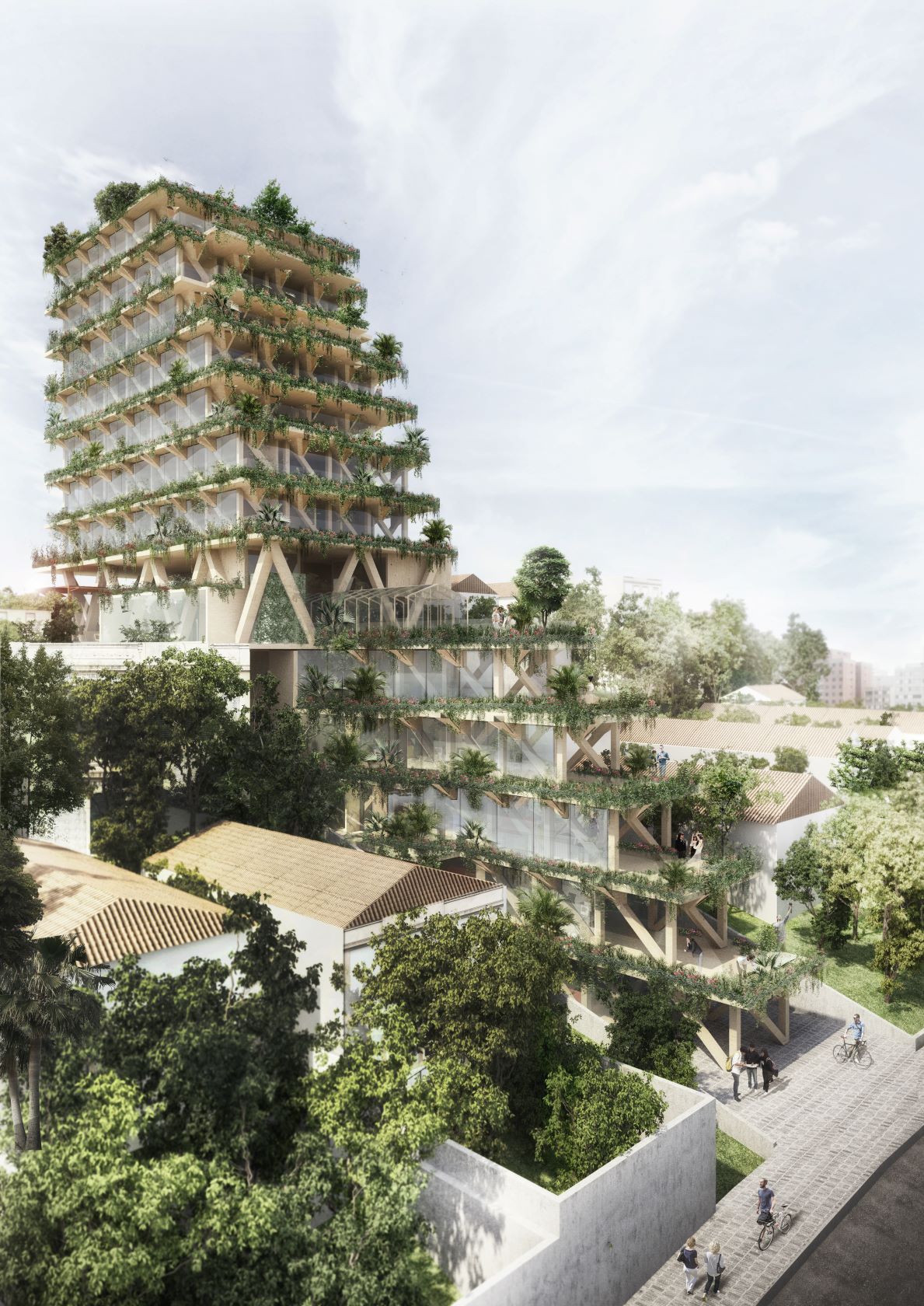
For Brazilian-French architecture firm Triptyque, biophilic design and sustainability has never been a trend. With a deep respect for the natural environment and an eye towards futuristic materials and building practices, the firm has undertaken projects reflecting their ecological sensibilities since they first launched in São Paulo in 2000. Led by principals Greg Bousquet, Carolina Bueno, Guillaume Sibaud and Olivier Raffaelli, Triptyque opened an office in Paris in 2008 and has produced an impressive body of work in both Brazil and France that transcends the two distinct cultures, reimagining the relationship between architecture and nature by introducing the plant as a building material. “I think that architects have an enormous responsibility to consider the problems of the planet and to look out for the environment, to consider how they can do without this or that,” says Bousquet. “To build with respect.”
The group’s name, French for triptych, was an intentionally poetic choice, meant to capture their design sensibility and philosophical approach. “I don’t remember the exact origin story, but it explains us,” says Bousquet. “We thought it was transversal and explained architecture as it crosses art, music, theatre, paintings... There were a lot of triptyques there, and we felt it really marked our spirit.” They appreciated the imagery of the name: something divided into three parts, where each tranche worked together to make a better whole. Not to mention it also gave nod to three places of importance to the founders, São Paulo, Rio de Janeiro and Paris.
As students at the École des Beaux-Arts in Paris around the turn of the millennium, the quartet absorbed the influence of experimental groups and practices. Archigram, in particular, was a favorite: a British neofuturistic architectural collective whose work in the 1960s and 70s envisioned a built environment made of high-tech materials through hypothetical designs. Celebrated Brazilian architects Oscar Niemeyer and Paulo Mendes da Rocha have also been major influences on Triptyque—Niemeyer in particular for understanding the architect’s responsibility to look out for the environment.
Growing up around nature in Brazil (of the four founders only Bueno was raised in France) informed the group’s understanding of how to link public and private space through vegetation, which is at the root of their practice. “The amount of greenwashing in architecture is concerning,” says Bousquet. “We try to educate with our architecture, and orient a new way of building and thinking. It’s not just about the visible things, but about the techniques that allow for the most energy conservation and well-being.” Triptyque’s approach is as instructional as it is functional: they use their projects to set an example for their peers in architecture and design, to show that not only can a biophilic approach be kinder to the environment and conserve resources, but it affects the greater community: “It has such a good impact on the people to have buildings full of vegetation and flowers that attract butterflies and smell lovely. Without the plants, the buildings would have no soul.”

And soon to be completed is AMATA, a thirteen- story multi-purpose structure in São Paulo made entirely from reforested Brazilian timber, lauded for its structural capabilities, acoustics, thermal retention and resistance to fire. The project, which creates a cleaner chain of production and replaces nonrenewable resources with natural raw materials will absorb carbon dioxide from the environment while hopefully increasing the desirability of material like reforested Brazilian timber.
Looking back on twenty years of Triptyque, Bousquet affirms, “I’m proud that we’ve remained rooted in our integrity and that we’ve succeeded even a little bit in changing the perception of how and what architecture should be in such a steadfast community.”



